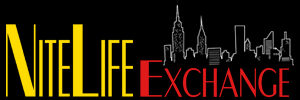
By Michael Barbieri***Fanny Brice is alive and well and appearing in New York City. No, I’m not referring to the current Broadway revival of Funny Girl, which has received mixed reviews at best. I’m talking about Josephine Sanges’ spot-on tribute to Brice, The Funny Girl in Me, at the Laurie Beechman Theatre. In it, Sanges brings the legendary Ziegfeld star to life, mining material from Funny Girl and Funny Lady, as well as songs and stories from Brice’s life, her career in the Ziegfeld Follies, in films and on radio.
 Josephine Sanges, a multi-talented cabaret and jazz singer, actress and recording artist, is the winner of the 2019 MAC Award for Female Vocalist and the recipient of the 2017 Margaret Whiting Award. In 1995, Sanges played Brice in the Diocesan Theater Guild’s production of Funny Girl and has brought her experience with the role to this brilliant cabaret act.
Josephine Sanges, a multi-talented cabaret and jazz singer, actress and recording artist, is the winner of the 2019 MAC Award for Female Vocalist and the recipient of the 2017 Margaret Whiting Award. In 1995, Sanges played Brice in the Diocesan Theater Guild’s production of Funny Girl and has brought her experience with the role to this brilliant cabaret act.
The evening flew by like a funny, entertaining history lesson—or rather several lessons. We learned about Brice, about Sanges herself, and of course, there was mention of Barbra Streisand, who brought the comedienne to life onstage in the original Funny Girl and in its subsequent film adaptation. Without Streisand, sadly, many people might never have heard of Fanny Brice, so… let’s hear if for her! After a tongue-in-cheek offstage intro from Baby Snooks, one of Brice’s iconic characters, Sanges hit the stage with “Let’s Hear it for Me” (J. Kander, F. Ebb), from Funny Lady, paired with Funny Girl’s “I’m the Greatest Star” (B. Merrill, J. Styne). A brave choice, this perfect, celebratory opener let the audience know from the start that Sanges hadn’t fallen into the trap of imitating Streisand’s well-known inflections. Rather, she made the songs completely her own—even throwing in some modern references, as when she sang “…I’m a natural cougher,” she added “It’s not what you think!”— a nod to Covid.
Indeed, many of the songs we most identify with Streisand’s phrasing were all delivered in Sanges’ refreshingly unique way. “Don’t Rain on My Parade,” “How Lucky Can You Get?” and “People,” Barbra’s signature song, so to speak, showcased Sanges’ own strong, distinctive voice, while others, like “Who Are You Now?” “More Than You Know” and “The Music That Makes Me Dance,” were sung simply and beautifully—by turns wistful and melancholy, then hopeful, but never overdone. “Who Are You Now?” in particular, was set apart by Sanges’ gorgeous, unadorned delivery—once through and done!
I had been aware of Ms. Sanges’ power as a vocalist. For me, what brought this particular show to a higher level, was discovering what a gifted mimic she is. Sanges didn’t just sing Brice’s specialty material, she absolutely channeled the woman! I’m not a Fanny Brice scholar by any means, but I have seen film clips and heard recordings of the star and Sanges’ imitation is eerily accurate. Lesser-known gems like “Quainty Dainty Me” (B. Kalmar, H. Ruby), “Sadie Salome Go Home” (I. Berlin, E. Leslie) and “Oh, How I Hate That Fella Nathan” (L. Brown, A. Von Tilzer), were delivered with, what to my untrained ear, sounded like a flawless Yiddish accent. Not only did Sanges, who isn’t Jewish, nail Brice’s inflections and cadences, bu t she even brought some of Brice’s memorable facial expressions to the performance! No disrespect intended, but even Ms. Streisand didn’t achieve such a true-to-life impersonation!
t she even brought some of Brice’s memorable facial expressions to the performance! No disrespect intended, but even Ms. Streisand didn’t achieve such a true-to-life impersonation!
There were also moments that showed off the many facets of Sanges, including a cute segment featuring Baby Snooks, whom she brought to life simply by putting a bow in her hair. She was ably assisted in her characterization with the help of her brilliant Musical Director John M. Cook, who voiced Snooks’ cranky father, Lancelot “Daddy” Higgins. Sanges’ rendition of “Second Hand Rose” (G. Clarke, J. F. Hanley) was, in turn, straightforward and not overly cutesy, while a medley of songs by Billy Rose included “I’d Rather Be Blue Over You (Than Happy With Somebody Else)” (B. Rose, F. Fisher), which she performed with a subtle sexiness.
Early in the show, Sanges quoted Brice as saying “…I made most things happen for me.” I suppose one could say Brice became the star she was by being authentically herself. As if to prove the deep connection that Sanges feels with Brice, she performed one song that was truly, authentically hers: “Touching Magic,” which was written for her by John M. Cook. The number showed off not only  her strength, but also her vulnerability—the very qualities that Brice employed to achieve her stardom.
her strength, but also her vulnerability—the very qualities that Brice employed to achieve her stardom.
Sanges told us that while she believes herself to be a throwback to another era, Brice was actually a throw forward, so to speak—opening the door for female singers and comics for decades to come. I believe that Josephine Sanges, along with Cook and director Jeff Harnar, have created a remarkable show that, aside from being hugely entertaining, has opened the door for audiences to learn about about the real Fanny Brice. As well they should!








